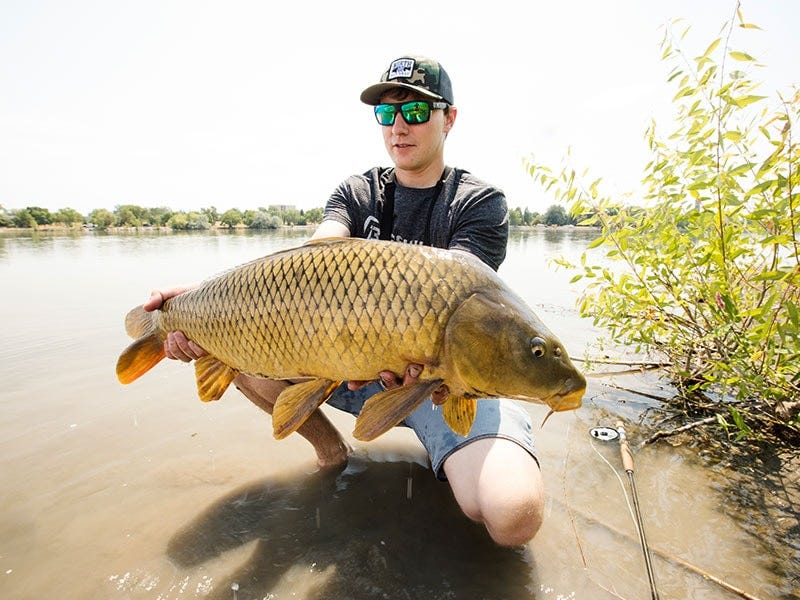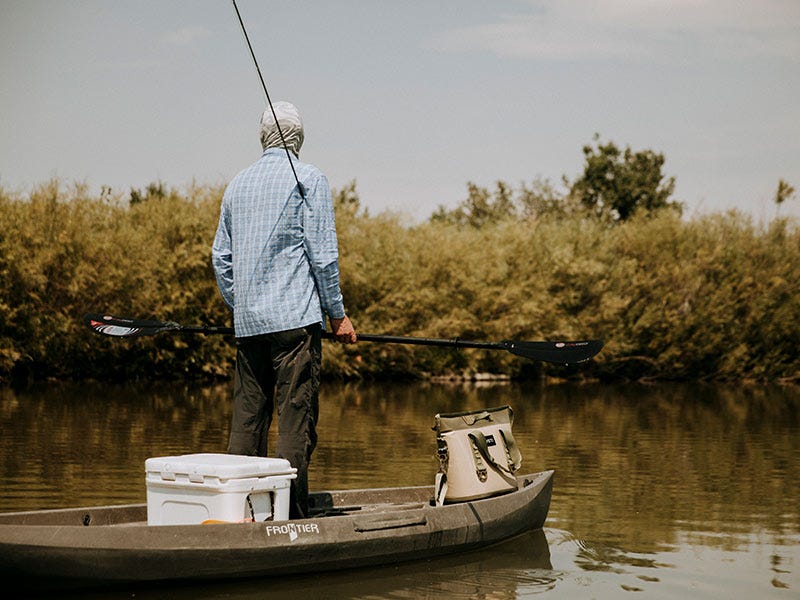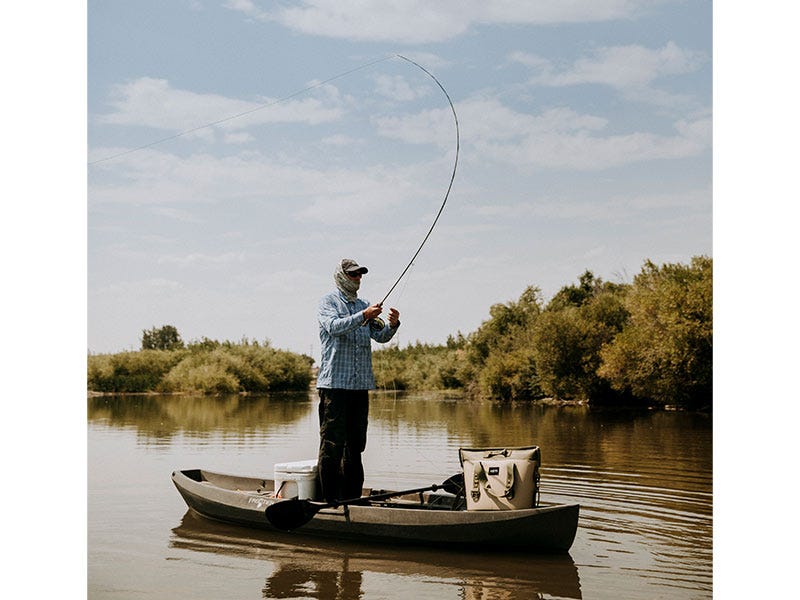Premier Carp Fishing - Lower Snake River Carp

Carp have made a name for themselves over these last couple of decades to become a very popular, do I dare say, “game fish”?? The origination of targeting carp on a fly may never have been pinpointed to one particular angler, but it is known that a lot of pioneers have been located in Colorado. Now anglers all over the world are opening up their eyes to this hard fighting, tricky to catch species of fish.

My first experience with carp was above the Yellowtail Dam on Bighorn Lake with Ron Meek from Sweetwater Travel Company. Ron was guiding me into these carp. He had mentioned to me on the ride up there that these fish can spook easily, and we have to go in with a slow, stealthy approach. We launched the jet boat and headed to one of the bays where he had, had success time after time. He instructed that we are looking for the “cruisers,” -fish that are about a foot below the water looking up. This is better known as on the prowl searching for tasty morsels. The pattern he had me tie on at the ramp was a cicada. There was no cicada hatch, yet the fish loved these flies. I went five for five, with the biggest one weighing in about five pounds. Now, that’s nothing major when it comes to carp, but it sure put up a great fight.
Lower Snake River Carp
Fifteen minutes from the fly shop here in Lewiston is premier carp fishing that most people do not capitalize on. What is neat about Washington being right across the border, is that you do not need a fishing license to target common carp. This makes it a great opportunity for you, anglers, who live in Idaho and don’t want to buy a Washington license. The Snake River has carp throughout most of its length, all the way to its confluence with the Columbia River.

Targeting these fish can be a puzzle sometimes and it all has to do with the time of year. These fish generally like slower moving water, and they are not afraid to travel through culverts. So, keep in mind, that the little side ponds along the Snake can hold quite a few fish. Also, carp enjoy eating just about everything the river has to offer. My favorite time to catch them is when they are stacked underneath mulberry bushes along the river. This can provide great topwater carp action on mulberry imitations. The moment the fly hits the water, these fish chase and explode on it. Plus, small crayfish patterns work most of the year for these fish and are a primary food source. Near the confluence of the Columbia, the carp stack next to barges picking up grain. They’ll feed aggressively on grain that spills off the side of these barges while they are at the dock. Finally, carp are very dynamic feeders and will capitalize on just about anything that hits the water.
Most carp are targeted by sight fishing. You’ll find that they can be schooled up just under the surface in large schools, cruising in small groups, or resting on the bottom on shallow flats. Slow cruising carp will generally take the opportunity to eat small crayfish or other underwater slow-moving life. Fish that are schooled up and sucking at the surface will generally hit a small orange or white popper fished either dead drifted or moved very slowly. If carp are sitting just under the surface on a foam line, these small poppers can be deadly.
Designing flies for carp? Learn more here.
How did Carp get to America?
With the influx of migrant workers to America in the middle of the industrial revolution. A lot of immigrants from Asia made their way over. Carp have been a food source with these folks for over 4,000 years. Baffled by the fact that these pristine waters didn’t have carp, they introduced them to eat. The carp ran rampant at a fast rate, populations grew to be one of the most invasive aquatic species in North America. Juveniles can grow up to eight inches in the first year of their life, while the females can lay 300,000 thousand eggs a year. If only 1/24th of those eggs survive, that would mean that 12,500 new juveniles would be in the river system. Now, let’s say if 1/24th of those juveniles survive, that means that 520 fish would grow to become adults. I hope that puts a little perspective on how fast these populations can grow.
Best Flies to use on Lower Snake River Carp
The common carps diet arrays into a wide variety. They eat minnows, frogs, smolts, grasshoppers, caddis, the list goes on and on. Some common, pun intended, flies to use are; woolly buggers, San Juan worms, hoppers, and other foam bodied flies. Also, flies that new anglers and some of you seasoned veterans might not know about include the; clawdad kraft, Luke’s carp urchin, dirty monkey, and the uv2 crawdad. Plus, saltwater flies that work as well are the; Veverka mantis shrimp, McVay gotcha, and the EP crab.
Which flies catch carp? Read more here.
Best Fly Rod Setup for Lower Snake River Carp
I like to fish a 7-weight when I target carp. I don’t like having a lighter-weight rod than that. It just causes a headache when you have to play the fish. (You can always get a heavier rod.) Carp tend to go docile after you fight them for a little while. You’ll think it has submitted, and you’ll have it right at the surface when BAM! It gives you another powerful explosion back to the depths. With carp being spooky, using a nine-foot leader and above is a good idea. Also, you’ll want to use fluorocarbon tippet because it dissipates when it hits the water, and it has a better sinking rate than the monofilament. Plus, ensure that you have a tippet that has a heavier breaking strength. These fish are strong. You’ll want to make sure that you tie good knots. Finally, make sure that you have a reel with a great drag and a floating line on it. If you’re worried about depth, ensure that you have a heavier fly. There is no need for sinking line or sink tips.
Best fly rod setup? Order online here.
Learning the carp game is a long process. It’s more about luck -being in the right place at the right time to catch fish. Plus, your casts have to be crisp and accurate. I still have not learned how to be proficient and catch fish every time I go out. Granted, I have only been doing it for three years… But, I was catching steelhead my first-year fishing with a Spey rod and there are less of those then there are carp. Remember, to hold your mouth right, keep the faith, and you will prevail!
Wish you knew what the fishing conditions are? Read our current fish reports here.
